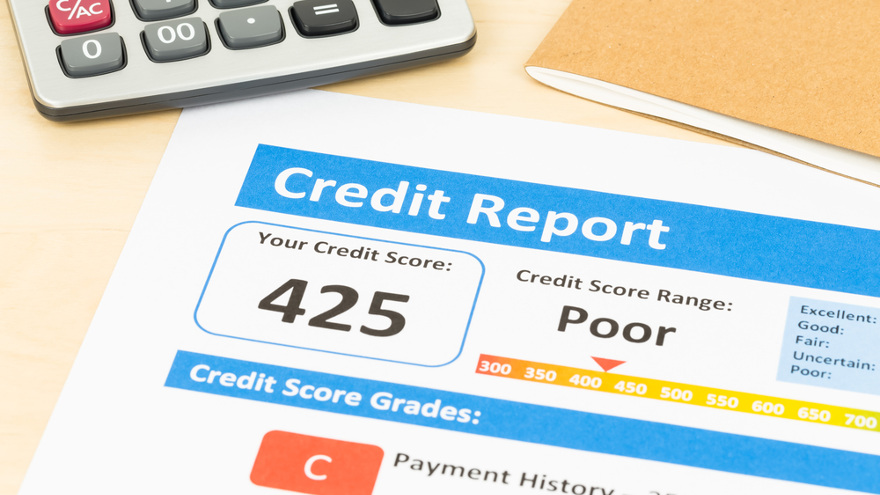Q3 deep subprime originations sink to lowest level ever

By subscribing, you agree to receive communications from Auto Remarketing and our partners in accordance with our Privacy Policy. We may share your information with select partners and sponsors who may contact you about their products and services. You may unsubscribe at any time.
COSTA MESA, Calif. –
The evidence continues to mount showing how much auto finance companies are tightening their underwriting and slowing the volume of subprime paper they're adding to their portfolios.
Experian Automotive reported on Thursday that the number of consumers outside prime (with a credit score of 600 or below) notably decreased during the third quarter, hitting the lowest total finance market share on record since 2012. And the percentage of deep subprime originations sunk to a level never seen previously.
Analysts explained that Experian data shows the auto finance market continues to gain strength and stability. According to Experian’s latest State of the Automotive Finance Market report, prime consumers grabbed the lion’s share of the total finance market (40.9 percent), while super-prime buyers showed the largest increase, reaching 20.16 percent market share.
Melinda Zabritski, senior director of automotive finance for Experian, went so far as to refute again the industry naysayers who have predicted the bursting of the so-called auto finance subprime bubble for some time.
“For some time now, the story has been focused incorrectly on the rise in subprime lending. But the data over the last several quarters has shown that the entire market is growing, not just subprime,” Zabritski said. “The market turning more prime is an encouraging trend. It indicates that industry professionals are using data and analytics as part of the lending process, and consumers are taking a more active role in managing their credit before buying a car.”
The Q3 report also indicated that contract terms for new vehicles extended, and credit quality for obtaining financing for both new and used vehicles notably improved.
Subscribe to Auto Remarketing to stay informed and stay ahead.
By subscribing, you agree to receive communications from Auto Remarketing and our partners in accordance with our Privacy Policy. We may share your information with select partners and sponsors who may contact you about their products and services. You may unsubscribe at any time.
The average term for new-vehicle loans hit an all-time high of 69 months. While this statistic could trigger an alarm for some market watchers, Experian pointed out that its findings showed that buyers outside prime decreased by 4.3 percent, making up only 10.74 percent of the new-vehicle financing market.
Analysts also learned that prime and super-prime buyers shifted to used vehicles, growing to make up 49.83 percent of the used market. In comparison, the percent of buyers outside prime have decreased, making up only 31.34 percent of the market (only slightly above last quarter's record low).
Meanwhile, Experian also determined that deep-subprime consumers with a credit score of 500 or below obtaining used-vehicle financing dropped 9.2 percent to sink to an all-time low of 4.64 percent of the market.
“It’s clear that affordability is a driving force in a consumer’s decision to finance a vehicle, and the data shows that consumers are focused on doing what they need to do to reduce monthly payments and obtain the right vehicle that fits their needs, whether it’s buying new or used,” Zabritski said.
“By unlocking the potential of this market data, we can help consumers and the industry achieve more by empowering them to make better decisions,” she went on to say.
Past reports have shown that consumers often choose leasing to reduce monthly payments. But this quarter’s report showed a slight decrease in leasing across all risk categories, as more buyers shift to the financing market. The only exception was the super-prime category, which increased slightly (1.8 percent).
The average amount financed for new vehicles in the third quarter was $30,329, up $291 from Q3 2016. For used vehicles, the average amount financed reached $19,291, an increase of $56 over the previous year.
As for monthly payments? For new vehicles, the average payment was $502 per month, increasing by $6 over the previous year, while used-vehicle payments averaged $365 per month, up $3 from the previous year.
Other key findings from the Q3 2017 report included:
—The average credit score for financing a new vehicle (both installment contracts and leases) was 716.
—The average credit score for financing a used vehicle was 659 (620 for independent and 682 for franchise dealers).
—While average new-vehicle loan terms hit 69 months, the average term for used vehicle loans was 64 months.
—Total open automotive balances reached $1.121 trillion, up 6.8 percent from the previous year.
—The average new-vehicle lease payment was $412, up $6 from Q3 2016.
—The average financing interest rate was 5.1 percent for new vehicles and 8.7 percent for used vehicles.
—Credit unions and captive finance companies increased market share of total vehicle financing, growing to 21 percent and 29.8 percent — an increase of 6.9 percent and 35.1 percent, respectively.
—Banks lost market share of total vehicle financing, dropping 6.3 percent to reach 32.9 percent of the market.


